Australian prehistoric eagle that hunted ancient marsupials
- Published
- comments
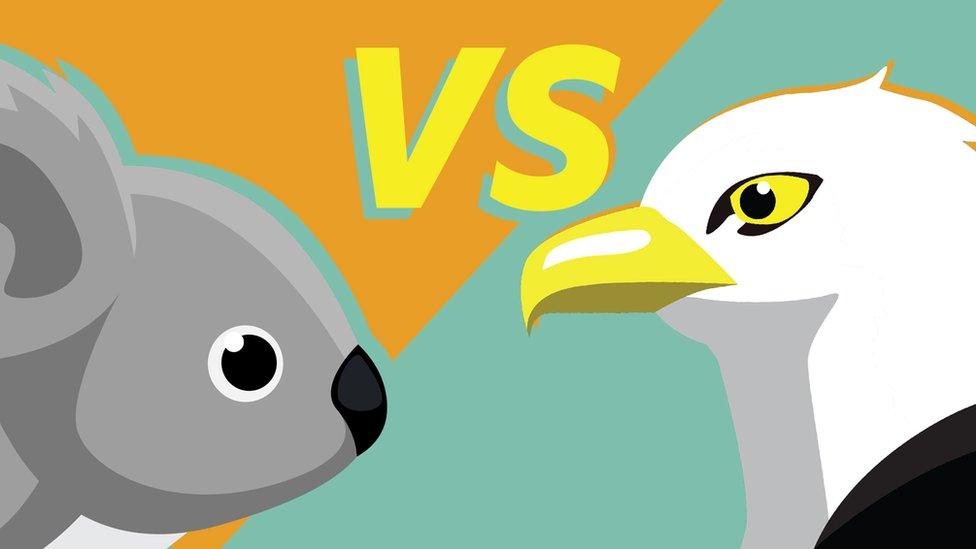
Who do you think would win in a fight?
A fossil belonging to a koala-hunting eagle has been discovered in South Australia!
Palaeontologists - scientists who study fossils - found 63 bones that they believe belong to an eagle, which existed 25 million years ago.
This makes it one of the oldest species of eagle in the world.
And they've given the newly discovered species of raptor a rather snappy name - Archaehierax sylvestris.
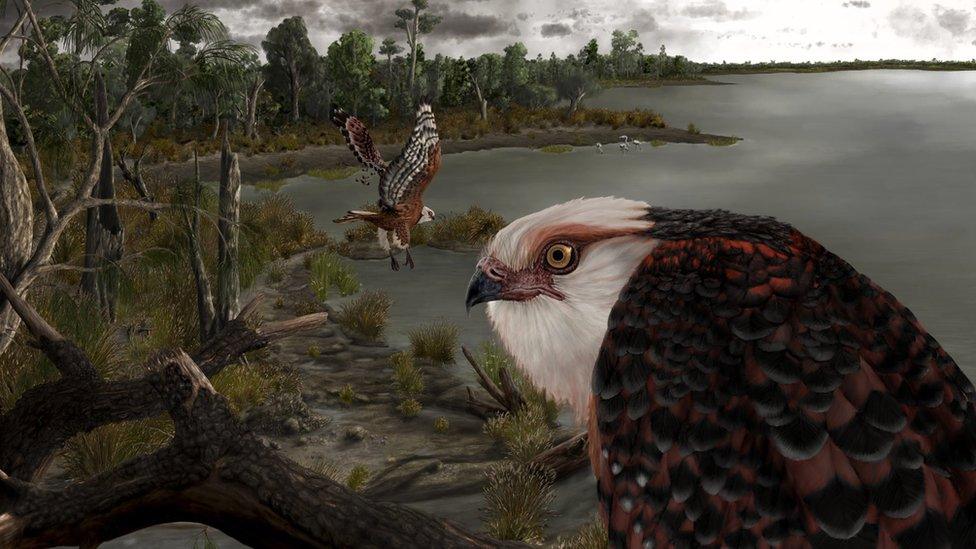
Looks like someone got up on the wrong side of the branch this morning?
It's thought that this eagle lived in forests, and hunted the prehistoric ancestors of marsupial animals like koala, possums and wombats.
"The bones reveal that this species had short wings and long legs for its size - something we also see in modern eagles and hawks that inhabit enclosed forests, and which also tend to be ambush predators," said Ellen Mather, one of the authors of the study at Flinders University in Australia.
It had a large foot span, stretching 15cm across - similar in length to the diameter of a saucer.
This would have meant they could capture their prey more easily.
Ellen Mather also said that the eagle "would have been probably one of the larger eagles around at the time..."
Scary stuff! (If you're a prehistoric wombat...)
Thankfully for Australia's marsupials, this eagle has no known descendent species existing today.
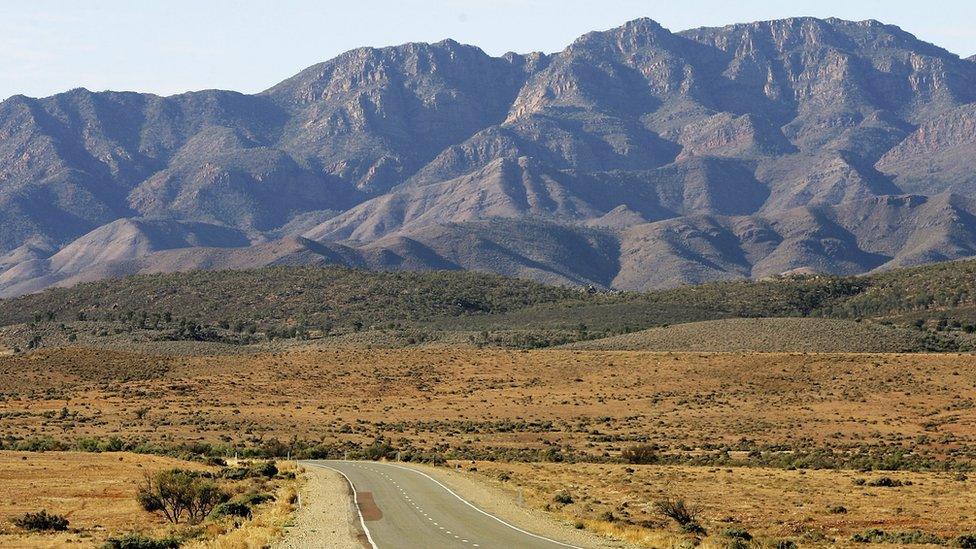
The ancient lake where the fossils were found is in the Australian outback near the Flinders Ranges
The bones were discovered on the shore of an ancient salt lake in the Australian outback, known as Lake Pinpa.
The area rarely holds water any more, but back when the Archaehierax sylvestris was alive it would have been 60 miles across and surrounded by a lush, green rainforest.
The area around Lake Pinpa has held fossils of many pre-historic animals for centuries.
And this has helped palaeontologists find out more about the kind of wildlife that used to live in Australia.
- Published27 September 2021
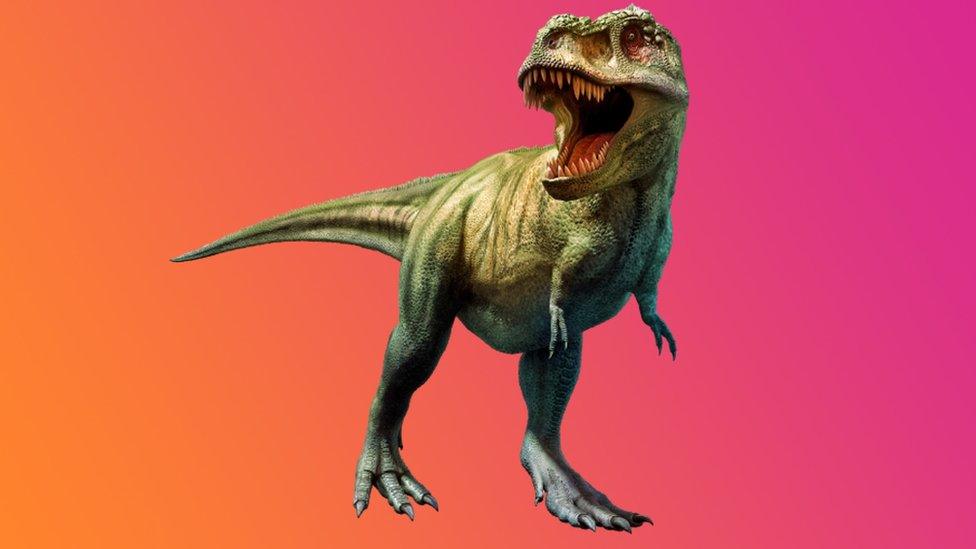
- Published24 September 2021
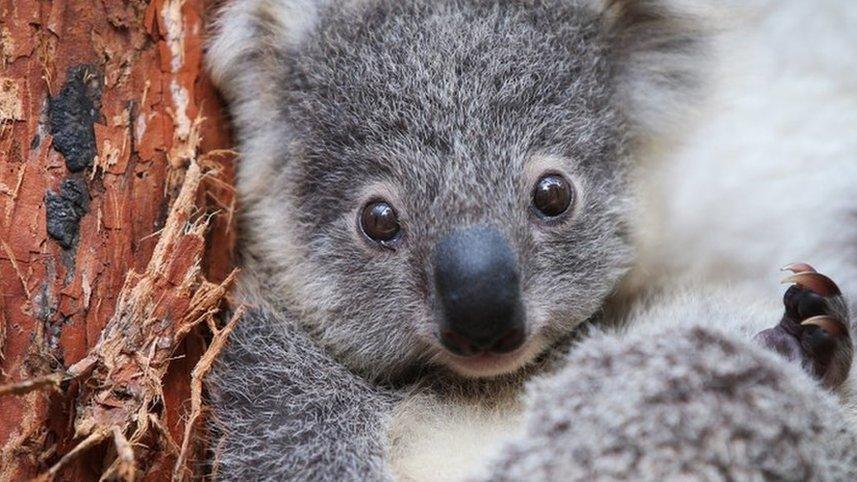
- Published26 September 2021

